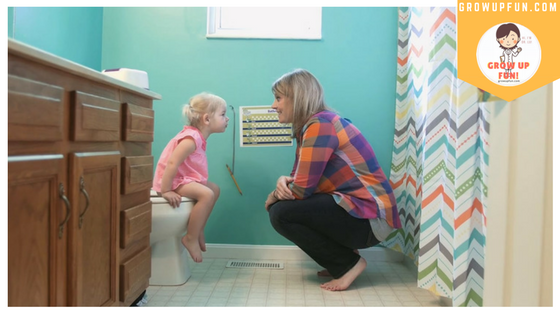Timing is important when planning to get your child to get rid of their diapers and nappies. Typically, toilet training starts between 22 and 30 months. However, development varies for every child. The right time to start is when they are both physically and mentally ready.
How do you know if your child is ready for toilet training? Here are 10 common signs that may help you decide when to start.
- When your child is physically capable of walking and sitting down. Their movement skills should at least be developed before starting to teach them to use toilets.
- When your child is becoming more independent by learning how to say “No.”
- When your child begins a peculiar interest on people going to the toilet.
- When you experience dry nappies for at least 2 hours. This means your child can already control his bladder.
- When your child starts telling you every time he poops or pees. If they tell you before actually doing the deed then they are most ready for toilet training.
- When they try to pull-off their diapers after they poop or pee. They feel uncomfortable with the wetness and begin to hate wearing them.
- When their bowel movement has become regular with soft and formed poop.
- When your child is capable of wearing pants or jammies on their own. E.g. Pulling them up and down.
- When your child has enhanced his cognitive skills. When the child already understands language that they are capable of receiving instructions like “Give the ball to Mommy.”
- When your child shows understanding of the things around him. E.g. your child knows the bedroom when it is time for sleep. He knows to point to the kitchen when he is hungry. And he knows that people around the house go to the toilet when they pee.
Getting Ready for Training:
First is to decide whether you are using a potty or the toilet. The latter can be wide and scary for kids which means using a potty is more convenient. It is portable and less scary than the toilet. Some parents use them together — whichever is the most accessible to the child at the time of peeing or pooping. A potty is placed in the bedroom to convince the children that they have something to use whenever they feel like peeing at night. They use the toilets like the adults in the house during day time. Parents should consider whichever their child feels most comfortable with.
Second is to make sure that you have all the right equipment to use for training. If by means of the toilet, parents must consider its height and size. You will need a stool for the little ones to step on to reach the bowl. You will also need a smaller seat cover to secure your child when sitting down.
Third is to choose the right time to start your child’s toilet training. Consider upcoming family or work events that may delay your child’s training. For example, thanksgiving holidays with the whole family or your first child starting grade school. It could also be a big promotion at work that will cut your time and focus on your toddler. It is best to plan training before or after these big changes as interruptions may lose their interest in learning how to be independent. You can create a schedule with your kid that incorporates toilet training in their daily activities.
